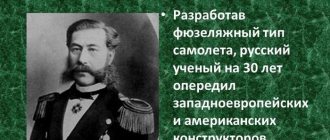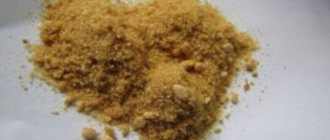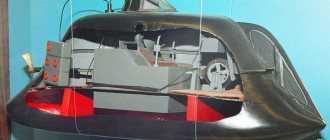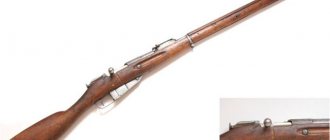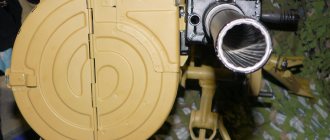Until the end of the first third of the 19th century, gunpowder fully met the needs of progress. But science and industry did not stand still, and soon it ceased to meet the requirements of the time due to its low power.
Explosive oil
And in 1846, chemists proposed two new explosives - pyroxylin and nitroglycerin. In Turin, the Italian chemist Ascanio Sobrero discovered that it is enough to treat glycerin with nitric acid (nitration) to form an oily transparent liquid - nitroglycerin. This can be done under the simplest conditions (making black powder is more difficult). The explosive power of nitroglycerin is more than 20 times greater than black powder and in most respects 4–5 times more powerful than TNT. Apart from the nuclear bomb, humanity has never invented a more powerful explosive than nitroglycerin.
But the devil living in nitroglycerin turned out to be evil and rebellious. It turned out that the sensitivity of this substance to external influences is only slightly inferior to mercury fulminate. It can explode already at the moment of nitration; it cannot be shaken, heated and cooled, or exposed to the sun. It may explode during storage. And if you set it on fire with a match, it can burn completely calmly... But by the middle of the 19th century, the need for powerful explosives was already so great that, despite numerous accidents, nitroglycerin began to be widely used in blasting operations.
The glory of curbing nitroglycerin belongs to Alfred Nobel. Who was this man who rode the messenger of hell? It is common knowledge that he is a Swedish scientist, engineer, inventor and entrepreneur. Much less known is Nobel's connection with Russia. Without it, who knows whether Nobel would have been able to invent dynamite?
Russian Swede
Alfred Nobel was born in Sweden in 1833, and already in 1837 his bankrupt father Emmanuel Nobel left Stockholm and went to Russia. Having received a good reward from the Russian government for the sea mine he invented, Emmanuel moved his family to Russia and in 1842 opened a mechanical workshop in St. Petersburg. Significant military orders allow the company to quickly develop into a large, thriving company (Fonderie et Atelier Mecanique Nobel et Fils).
The family's financial wealth allowed Alfred to receive an excellent education at home. Famous Russian chemist, full member of the Russian Academy of Sciences N.N. Zinin, who gave the sickly Alfred lessons in chemistry, instilled in him a love for this science. At the age of 16, Alfred was already helping his father in the development of sea mines, and then went to Paris, where he studied chemistry under the guidance of the famous scientist Pelus.
By 1854, Zinin, after lengthy attempts to tame nitroglycerin, became disillusioned with it, but passed on to his former student the safety rules he had developed: it was Zinin who determined the basic properties of nitroglycerin and the temperature limits within which it “behaves decently.” During this period, Nobel became close to artillery officer V.F. Petrushevsky, a great enthusiast of nitroglycerin, who did a lot in the field of studying methods for producing this explosive, and Russian chemists Jacobi and Vereskov.
Detonator capsule No. 8 is a copper tube, closed at one end and open at the other.
Explosive character
On July 17, 1866, a terrible explosion thundered in Peterhof - 20 pounds of newly obtained nitroglycerin flew into the air. The result is a categorical ban by Emperor Alexander II to carry out any work with hazardous liquids in Russia. But shortly before this, Petrushevsky suggested to Nobel that the cause of nitroglycerin explosions is its decomposition with the formation of acidic unstable compounds, and mixing it with a substance that neutralizes acids will make the explosive less dangerous. Petrushevsky did not invent dynamite, but at that moment he was half a step away from it. It was he who suggested to Nobel the direction of further searches.
Despite the extreme danger, the need for powerful explosives was very great. In 1863, Nobel arrived in Stockholm, where he devoted himself entirely to developing safe technologies for the production of nitroglycerin. He invents an injector for continuously mixing glycerin with acid during the nitration process, which dramatically reduces the risk of explosions in production. To increase safety, the workers monitoring the nitrification process sit on one-legged stools at the time - so as not to fall asleep and not let the chemical reaction get out of control.
Despite the patent Nobel received, the nitroglycerin devil was not afraid of his new owner. On September 3, 1863, the Nobel plant in Gelenborg exploded. Alfred's younger brother, 20-year-old Albert, dies in the explosion. Nevertheless, in 1865, the Nobels managed to launch two new plants for the production of nitroglycerin - in Sweden and Germany. Alfred “tours” throughout Europe and America, proving at public lectures the safety of nitroglycerin if the rules for handling it are followed.
Nobel demonstrates his "exploding oil" to American businessmen, receives a US patent and establishes his own company on the Atlantic coast of America. The American gunpowder manufacturer DuPont, sensing competition, actively resists the introduction of a new product. But then an enterprise in Germany blows up, and almost simultaneously two large explosions occur in mines in Sweden. In December, a nitroglycerin plant in the United States explodes and two ships carrying nitroglycerin disappear into the depths of the ocean without a trace. Nobel's name is cursed all over the world; in New York he is even asked to leave the hotel where he was staying and take all the nitroglycerin samples with him. One after another, European countries are passing laws banning the production of nitroglycerin on their national territories.
Ciliate soil
The ban on nitroglycerin threatened Nobel with complete ruin. And then Alfred returns to his idea, which he began working on back in 1862 - neutralizing the sensitivity of nitroglycerin when it impregnates any porous substance. This path was suggested to him back in 1855 by Petrushevsky, who tried to impregnate black powder with nitroglycerin, thereby hoping to increase the power of the explosive.
In 1864, Nobel finds the required substance. Diatomaceous earth, also known as diatomaceous earth, infusor earth and rock meal, is formed when siliceous shells of mollusks and some algae are deposited on the bottom of reservoirs. Ciliate soil can be found in every lake, 90% of its volume is in pores that can greedily absorb nitroglycerin.
The first experiments gave excellent results. The mixture of nitroglycerin and kieselguhr was weaker than the pure liquid by about a quarter (that’s how much kieselguhr occupies in the total volume), but was almost safe to handle. Nobel gave this mixture, which looked like peat, the name “dynamite” (from the Greek word “dinos” - strength). After a series of careful tests, on May 7, 1867, he patented dynamite in England, Sweden, and Germany. New explosives are conquering Europe. Of course, dynamite can be thrown, cut, shaken, it can be put in bags and boxes, and it does not explode! But at the same time it works reliably when needed. The irony of fate is that a year later Petrushevsky completely independently mixes nitroglycerin with magnesia and obtains an explosive, later called “Russian dynamite.”
Triumph of Dynamite
The end of the nineteenth century and the beginning of the twentieth is the period of triumph of dynamite. It finds the widest application in the development of rocks, when laying tunnels, in mines. With his help, during the construction of the railway through the Gotthard Pass, 80 tunnels were made, including the “Great Tunnel” - 15 km of solid rock. Dynamite was used to make pits for the supports of 324 bridges. Dynamite played a huge role in the construction of the building of the century - the Panama Canal. 3,000 tons of dynamite were used to excavate New York's New Croton reservoir system (completed in 1890). Dynamite ensures the construction of the Alpine Tunnel and the Corinth Canal, the removal of underwater rocks in the East River (New York), the clearing of the Danube bed... Of course, dynamite began to be used in the Baku fields, where the “Russian Rockefellers” - Alfred Nobel and his older brother - were in charge .
Dynamite not only brought fame and glory to Alfred Nobel, but also made him a millionaire. If in 1867 his factory produced only 11 tons of dynamite, then seven years later the annual production at Nobel's factories was already 3,300 tons.
However, not all countries reacted favorably to these explosives. Thus, in France, military needs forced the production of dynamite to begin in the spring of 1871, but the defeat in the Franco-Prussian War led to the fact that production was curtailed until 1875. In England, Abel's lobbying for black powder caused Parliament to pass legislation in 1869 banning the manufacture, import, sale and transport of nitroglycerin and any other substance containing nitroglycerin within Great Britain. This law, under pressure from the coal lobby, which was in dire need of good explosives, was repealed only in 1893.
In seven years, Nobel built 17 factories in different countries of the world. By this time, his enterprises produced more explosives than the state-owned gunpowder factories of all countries of the world combined.
Nobel's final invention was the smokeless gunpowder ballistite, created by Alfred in collaboration with his personal secretary, the young Swedish chemist Ragnar Salman.
Alfred Nobel died at the age of 63 on December 10, 1896 in San Remo at the zenith of his fame and power. He owned 93 enterprises that, in addition to dynamite, produced nitric acid, glycerin, fertilizers, copper alloys, wire, cable, nitrocellulose and all types of explosives and detonators.
Forgotten invention
It is generally accepted that dynamite was Alfred Nobel's finest hour. But experts believe that his main invention was not dynamite at all, but a small copper tube. The detonator capsule became a real revolution in the field of explosives, comparable only to the invention of the internal combustion engine in the field of mechanical engineering.
When black powder was used as an explosive, there were no problems with initiating an explosion - it was enough to pour a path of the same gunpowder onto the charge and set it on fire. Later they began to use stopin (thread impregnated with saltpeter), then Bickford came up with his famous cord. When the fire reached the gunpowder, an explosion was guaranteed. The situation changed with the advent of nitroglycerin, pyroxylin, and melinite. These explosives, including even the very sensitive nitroglycerin, flatly refused to explode from an open flame.
The best way to initiate an explosion was to use... an explosion. Mercury fulminate had already been invented and was used in percussion caps to ignite gunpowder in guns (percussion cap guns) and later in cartridge primers. Alfred Nobel in 1863 had the idea to fill a copper tube open at one end with mercury fulminate in a sufficiently large amount. This tube was placed in an explosive charge, and a fuse cord was inserted into its open end. The jet of flame from the ignited cord reliably ignited fulminate of mercury, sensitive to any external influence, and a small explosion was enough to explode nitroglycerin, and later dynamite and other explosives.
Alfred Nobel developed a whole line of twelve blasting caps of various sizes and numbered them. Number 8 turned out to be the most suitable for most blasting operations. Over time, the detonator cap was improved, many of its varieties appeared, but the Nobel “number eight” today has the same dimensions and design and is used in all countries of the world, unlike dynamite, gradually and imperceptibly faded into secondary roles and almost completely disappeared from the stage.
Biography
The future inventor of dynamite, Alfred Nobel, was born in Stockholm (Sweden) on October 21, 1833. He was the fourth son of Emmanuel and Caroline Nobel. Emmanuel was an engineer who married Caroline Andriette Alsel in 1827. The couple had eight children, of whom only Alfred and three brothers reached adulthood. As a child, Nobel was often ill, but from an early age he showed a keen curiosity. He was interested in explosives and learned basic engineering from his father. The father, meanwhile, suffered failures in various business ventures until he moved to St. Petersburg in 1837, where he became a successful manufacturer of mines and tools.
Life abroad
In 1842, Nobel's family left Stockholm to join their father in St. Petersburg. Alfred's now wealthy parents could now hire him private teachers, and he proved to be an eager student. By the age of 16, Nobel had become a competent chemist, fluent in English, German, French and Russian.
In 1850, Alfred left Russia to spend a year in Paris studying chemistry and then four years in the United States working under John Erickson, who was building the battleship Monitor. Upon returning to St. Petersburg, he worked in his father's factory, which produced military equipment during the Crimean War. After the end of hostilities in 1856, the company had difficulty transitioning to manufacturing equipment for steamships and went bankrupt in 1859.
Bet on nitroglycerin
The future inventor of dynamite did not stay in Russia and returned to Sweden with his parents, and his brothers Robert and Ludwig decided to save the remains of the family enterprise. Alfred soon began experimenting with explosives in a small laboratory on his father's estate. At that time, the only reliable explosive used in mines was black powder. The newly created liquid nitroglycerin was much more powerful, but it was so unstable that it could not provide any safety. However, in 1862 Nobel built a small plant to produce it, while conducting research in the hope of finding a way to control its detonation.
In 1863 he invented a practical detonator consisting of a wooden plug inserted into a large charge of nitroglycerin stored in a metal container. The explosion of a small charge of black powder in the plug detonated a much more powerful charge of liquid explosive. This detonator marked the beginning of Nobel's reputation as an inventor, as well as the fortune he would make as an explosives manufacturer.
In 1865, Alfred created an improved detonator cap, which consisted of a small metal cap containing a charge of mercury fulminate, detonated either by impact or moderate heat. This invention marked the beginning of the modern use of explosives.
Military applications
Dynamite was first used in the Franco-Prussian War of 1870–1871, when Prussian sappers blew up French fortifications with dynamite. But the safety of dynamite turned out to be relative. The military immediately found out that when shot by a bullet, it explodes, and in certain cases the combustion turns into an explosion. Dynamite requires skilled handling. When frozen, it sharply increases its sensitivity, and when it thaws, nitroglycerin appears on its surface, revealing all its shortcomings. Dynamite cannot be stored for a long time (explosers say “dynamite sweats”). Dynamite cannot be pressed or even compacted in any way. This means that artillery shells, torpedoes and mines cannot be filled with dynamite: in peacetime they are stored for years and decades in boxes stacked in stacks.
The military was more satisfied with pyroxylin (discovered by Schönbein in 1846), which was more chemically stable; its sensitivity could be adjusted by changing its humidity. TNT, which appeared on the scene at the beginning of the 20th century, turned out to be the gravedigger of pyroxylin and finally ousted dynamite from the military sphere. Today, dynamite finds very little use in civilian sectors of the national economy. It accounts for a maximum of 2% of the total amount of explosives consumed.
The American field manual FM 5-250 Explosives and Demolitions divides dynamites into standard (for blasting) and military. The latter is less powerful, but safer to store and handle. However, only one traditional name remains from dynamite - nitroglycerin is not included in its composition (the mixture consists of 75% hexogen, 15% TNT, and 10% desensitizers and plasticizers).
Accident
Nitroglycerin itself, however, was difficult to transport and extremely dangerous to handle. So dangerous that Nobel's plant exploded in 1864, killing his younger brother Emil and others. Undeterred by this tragic accident, Alfred built several factories to produce nitroglycerin for use with his primers. These plants were as safe as the knowledge of the time allowed, but accidental explosions continued to occur.
For the sake of business, he hid his brother's death
For the sake of his experiments with nitroglycerin, Alfred was ready to go to great lengths. On September 3, 1864, 100 kilograms of the substance exploded at the Nobel factory. The entire building was destroyed, and three workers and Alfred's younger brother, Emil were killed. When the police arrived at the ashes, the bodies were already badly burned, and there was no way to identify them. And Alfred Nobel, in agreement with his father, deceived the law enforcement officers. They were told that only workers were in the factory, allegedly they did not follow the instructions when working with nitroglycerin. Alfred was very afraid that he would be prohibited from working with the new substance and therefore decided on such a “white lie.”
Article on the topic
At the doctor. Could modern medicine cure Suvorov and Nobel?
Lucky Accident
Nobel's second important invention was dynamite. In 1867, he accidentally discovered that nitroglycerin was completely absorbed by porous silica, and the resulting mixture was much safer to use and easier to handle. Alfred, the inventor of dynamite (from the Greek δύναμις, “power”), received patents for it in Great Britain (1867) and the USA (1868). The explosive made its creator famous all over the world, and soon it began to be used in the construction of tunnels and canals, and the construction of railways and roads.
Rattlesnake jelly
In the 1870s and 80s, dynamite inventor Alfred Nobel built a network of explosives factories across Europe and formed a network of corporations to sell them. He also continued to experiment to find the best ones, and in 1875 he created a more powerful form of dynamite, jelly fulminate, which he patented the following year. Again by accident, he discovered that a mixture of a solution of nitroglycerin with a loose fibrous substance known as nitrocellulose formed a dense, plastic material that was highly resistant to water and had greater explosive power. In 1887, Nobel introduced ballistite, a nitroglycerin smokeless powder and precursor to cordite. Although Alfred held patents for dynamite and other explosives, he was in constant conflict with competitors who stole his technology, which forced him into protracted patent disputes on several occasions.
Use of dynamite
A. Nobel patented dynamite for economic use. With its help, tunnels were made in the mountains, canals were broken, river beds and the bottom of bays were cleared, mining operations were carried out in many countries, transforming the landscape for the benefit of people. This brought Nobel huge incomes; he built new factories for the production of dynamite and by the beginning of 1880 owned twenty factories.
Soon, dynamite began to be used for military purposes. Its first use in 1870 in the war between France and Prussia showed its power and great promise for military campaigns. Dynamite became widely used for destruction and death. A. Nobel also received a lot of money from each batch of dynamite produced for murder.
Oil, weapons, wealth
Nobel's brothers, Ludwig and Robert, meanwhile developed newly discovered oil fields near Baku (now in Azerbaijan) on the Caspian Sea and became very rich men themselves. Sales of explosives around the world, as well as participation in the brothers' companies in Russia, brought Alfred a huge fortune. In 1893, the inventor of dynamite became interested in the Swedish arms industry, and the following year he bought an iron smelter in Bofors, near Värmland, which became the center of a famous arms factory. Besides explosives, Nobel invented many other things such as rayon and leather, and in total he registered more than 350 patents in various countries.
Insidious nitroglycerin
Alfred Nobel was very attracted to a variety of explosives. Gunpowder and nitroglycerin were widely used at that time. There were many problems with the latter, since it was very unstable and could explode at any moment. Because of this quality of nitroglycerin, Nobel lost his brother. Alfred had previously worked hard to create a stable and easy-to-transport explosive, and after his brother’s death he redoubled his efforts.
During Alfred Nobel's youth, gunpowder and nitroglycerin were widely used in mining. There were many problems with the latter, since it was very unstable and could explode at any moment.
In 1867, Alfred Nobel combined nitroglycerin and substances capable of absorbing it. This is how dynamite came about. By the way, translated from Greek, dynamite means strength. After some time, Nobel also patented a detonator.
In addition to dynamite, Alfred Nobel also owned patents for explosive jelly, cordite, a gas burner with a special design, ballista and many other inventions. In total, Alfred Nobel owned over 350 patents, but it was dynamite that brought him fame and fortune.
Alfred Nobel and his prize
When Nobel invented dynamite, he saw its use in helping to promote human progress, not murderous wars. But the persecution that began over such a dangerous discovery pushed Nobel to the idea that he needed to leave behind another, more significant trace. Thus, the Swedish inventor decided to establish a personal prize after his death, writing a will in 1895, according to which the bulk of his acquired fortune - 31 million crowns - went to a specially created fund.
The income from investments should be distributed each year in the form of bonuses to the people who brought the greatest benefit to humanity during the previous year. The interest is divided into 5 parts and is intended for a scientist who has made an important discovery in the field of chemistry, physics, literature, medicine and physiology, and has also made a significant contribution to maintaining peace on the planet.
Alfred Nobel's special wish was that the nationality of candidates not be taken into account.
The first Alfred Nobel Prize was awarded in 1901 to the physicist Roentgen Conrad for the discovery of the rays that bear his name. The Nobel Prizes, which are the most authoritative and honorable international awards, have had a huge impact on the development of world science and literature.
Also, Alfred Nobel, whose will amazed many scientists with its generosity, entered scientific history as the discoverer of “Nobelium,” a chemical element named in his honor. The Stockholm Institute of Physics and Technology and Dnepropetrovsk University are named after the outstanding scientist.
Science and inventions
After living in Paris for a while, Alfred moved to the USA. He was invited to his laboratory by the American inventor with Swedish roots, John Erickson, the developer of the warship Monitor. This ship subsequently took part in the American Civil War. In addition, Erickson closely studied the properties of solar energy. The experienced master allowed Nobel to engage in independent physical and chemical experiments.
Alfred Nobel in his youth
In total, Alfred spent two years in Europe, then returned to his native Stockholm. He continued the search for an active substance that would reduce the risk of explosion from the use of glycerol trinitrate. At that time, the Nobel family had their own factories in Stockholm, and Alfred conducted experiments there. The result was an explosion that occurred on September 3, 1864, and cost the lives of several people, among whom was the Nobels’ youngest son, Emil. He was not yet twenty years old. The father was never able to come to terms with the loss; he suffered a stroke, which confined him to bed until his death.
A month after the incident, Nobel patented nitroglycerin. He later had several more patents, including dynamite, a gelatin dynamite detonator, and several other explosives. In addition, he was responsible for the discovery of devices used in the household. Nobel invented a steam boiler, a refrigeration apparatus, a barometer, a gas burner, and a water meter. A chemist by training, he worked in a variety of industries and managed to patent 355 of his developments in the fields of chemistry, medicine, optics, biology, and metallurgy.
Invention of dynamite by Alfred Nobel
Alfred became the first developer of the chemical composition of nitrocellulose and artificial silk. The scientist advertised all his inventions at his own lectures, where he demonstrated the capabilities of his scientific research. Not only the inexperienced public, but also the scientist’s colleagues were eager to attend these presentations, which were very interesting and eventful.
In addition to scientific activities, Alfred also created literary works. He spent most of his time writing poetry and prose, which became a real outlet for him. Nobel's most controversial work was Nemesis, a play that church officials forbade publication for many years. Only in 2003 it was staged at the Stockholm Drama Theater to coincide with the day of memory of the great scientist.
Nobel was interested in science, history, literature, and philosophy. He was friends with famous writers, artists, scientists and statesmen of those times. The scientist became a regular guest at royal dinners and receptions, and was a member of the English, Swedish and Paris Academies of Sciences, as well as the Academy of Sciences of Uppsala University. He has been awarded numerous Swedish, French, Venezuelan and Brazilian awards and orders.
The Nobel family often needed money because a lot of money was spent on organizing and conducting experiments. However, the brothers soon managed to become owners of a stake in an oil field in Baku, and they gained financial independence.
In 1889, the International Peace Congress was held in the capital of France, at which Nobel presented his lectures to the participants. Some congress participants greeted his speech with sarcasm; they did not understand that a man who had invented means of mass destruction was doing among them. The press reacted instantly, and newspaper headlines were full of articles in which the scientist was called a “millionaire on blood”, “king of death”, “speculator in explosive death”. Alfred was very upset by this attitude towards his inventions, and almost broke down under the powerful fire of criticism directed at him.
Ascetic, writer, pacifist
The inventor of dynamite, Nobel, was a complex personality, which puzzled his contemporaries. Although his business interests required him to travel almost constantly, he remained a solitary recluse who was prone to bouts of depression. Alfred led a solitary and simple life, he was a man of ascetic habits, but he could also be a polite host, a good listener, and a man of insightful mind.
The inventor of dynamite never married, and apparently preferred the joy of creativity to romantic attachments. He had an abiding interest in literature, writing plays, novels and poetry that remained almost entirely unpublished. He had amazing energy and found it difficult to relax after intense work. Among his contemporaries he enjoyed a reputation as a liberal or even a socialist, but in fact he distrusted democracy, was against women's suffrage and supported a soft paternalism towards his many employees. Although the Swedish inventor of dynamite was essentially a pacifist and hoped that the destructive power of his creations would help end war, his view of humanity and nations was pessimistic.
Was a typical nerd
Alfred himself was known as a real botanist. He had a lot of knowledge, studied a large number of foreign languages, but never learned the art of eloquence. When the Nobels' business in Russia began to decline, Emmanuel sent his polyglot son to Europe to negotiate with foreign investors. But Alfred failed the task - he could not explain anything clearly and interest potential sponsors. By the way, Alfred Nobel was never married. Someone is sure that women avoided the botanist chemist, they were not interested in him, and someone says that Nobel himself was completely alien to romantic moods.
Surprise will
By 1895, Alfred developed angina, and on December 10 of the following year he died of a cerebral hemorrhage at his villa in San Remo (Italy). By this time, Nobel's business empire consisted of more than 90 factories producing explosives and ammunition. His will, drawn up in Paris on November 27, 1895 and deposited in a bank in Stockholm, contained a big surprise for his family, friends and the general public. The inventor of dynamite was always generous to humanitarian and scientific charities and left much of his fortune in trust to establish the most highly regarded international award, the Nobel Prize.
Death of a Death Dealer
One can only guess about the reasons for this decision. He was secretive and did not tell anyone about any of his decisions in the months leading up to his death. The most plausible possibility is that a strange incident in 1888 may have set off a chain of thought that led to his will. That same year, Alfred's brother Ludwig died while in Cannes, France. The French press reported his brother's death, but confused him with Alfred, and one of the newspapers published the headline "The Merchant of Death Died." Perhaps the inventor of dynamite instituted the prizes to avoid precisely the kind of posthumous reputation expressed by this premature obituary. It is obvious that the awards established reflect his interest in the fields of chemistry, physics, physiology and literature. There is also ample evidence that his friendship with the prominent Austrian pacifist Bertha von Suttner inspired him to create the Peace Prize.
Nobel himself, however, remains a figure of paradox and contradiction: a brilliant solitary man, part pessimist and part idealist, who invented the powerful explosives used in modern warfare and established the world's most prestigious prizes for intellectual services rendered to humanity.
Bequeathed the Nobel Prize to the world
In 1888, a tragedy occurred, followed by an incident. Alfrer Nobel's brother Ludwig . Many French newspapers made a mistake - they wrote that Alfred Nobel had died. The living inventor was perplexed when reading his obituaries in the press. It was after this incident that Alfred Nobel rewrote his will. He decided that he didn't want people to remember him once after he died by reading his obituary. Nobel wanted to remain in human memory forever. His will read: “All my movable and immovable property must be converted... into liquid assets, and the capital thus collected must be placed in a reliable bank. The income from the investments should belong to the fund, which will distribute them annually in the form of bonuses to those who during the previous year have brought the greatest benefit to humanity ... ".



